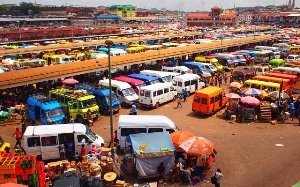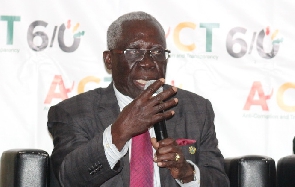The issue of poor roads and daily traffic congestion has surfaced again in recent weeks. Although we are real estate developers, transport infrastructure has an indirect effect on our business through accessibility and journey time : key drivers for housing demand.
Residents of Accra can attest to unfinished and unpaved roads, delayed road projects and unnecessary traffic and bottlenecks. Its obvious that a lack of financing is at the heart of these transport issues. We want to use this article to initiate some public discussion on possible alternative sources of funning transport through buying land.
Real estate developers acquire land in the hope that prospective buyers would be attracted to the area. When a new road or transport projects is announced near their sites, most property developers cheer because it naturally implies some upside in their property values.
These benefits are typically only enjoyed by private landowners. The Government and therefore the nation could have benefitted from this uplift through what has now been coined Land Value Capture.
Land Value capture is a type of public financing that recovers some or all of the value that public infrastructure generates for private landowners.
Policy makers in more developed countries are treating this initiative seriously: in their 2016 Budget, the British Government asked Transport for London to submit detailed proposals for funding transport projects in the city using land value capture.
By way of an example, International accountants KPMG and Savills , a property firm, undertook a study (using transactions data from the UK Land Registry) to show that the Jubilee Line train extension project produced a 52% land value uplift.
London is not alone in exploring land value capture approaches. In Australia, the Gold Coast Light Rail line in the state of Queensland was partly funded through a tax on property owners along the line of route.
Given our current issues in tax administration and collection of property taxes in Ghana, we could consider a more direct approach where the state acquires more land along the route of proposed transport projects. They can then realise the gain through secondary market sales: the state by its nature is more likely to register its interest making secondary market acquisitions easier and quicker.
This may also help avoid some of the pitfalls of multiple buyers we witness in many land transactions across the country especially for greenfield or newly registered land parcels.
In our view it is worth looking into land value capture mechanisms because they could offer a targeted method to finance infrastructure benefiting specific land, and 2) can induce economic multiplier effects and wider economic benefits through attracting investment, employment creation and expanding the tax base of an area.
In Economic terms, it's a useful way for the Treasury to capture a share of the positive externalities of public sector-financed investment. This can also help address public concern about the fact or perception of unfair windfalls to private speculators, or those with internal knowledge of proposed schemes, benefitting solely from public funded transport projects.
By writing this article, we hope to initiate some form of discussion and a look into this alternative way of funding transport infrastructure. Recently, we have witnessed various transport initiatives across Accra which may have transformational effects on journey times and therefore property prices for lands along the route.
For example, the expansion of the East Legon-Spintex Tunnel together with the Flowerpot-Tema Motoway-East Legon Fly over and the Burma Hills Bypass : these transport initiatives will potentially have a huge impact on journey times between surrounding areas.
The tunnel for instance could reduce journey times between East Legon and commercial nodes in Cantonments or Airport from the current 30 to 40 minutes to 15 to 20 minutes peak time and a lot less during offpeak times.
Land and property owners around the East Legon Boundary road area and Burma Hills area are likely to benefit from these infrastructure projects mentioned above. Now imagine if the government had acquired more of the land around these new road networks.
The uplift in land values over a 5 to 10 year period could have contributed significantly to pay for these infrastructure investments. Price increases are not guaranteed but real estate has proven itself to be one of the best hedges against inflation historically so this raises some questions about the possibility of funding future projects through innovative land value capture mechanisms.













